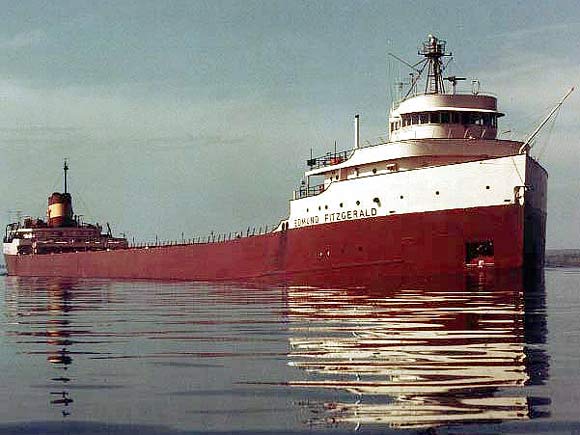New Clues to the Wreck of the Edmund Fitzgerald

Weather experts have "hindcasted" the storm that sank the Edmund Fitzgerald on Lake Superior during a November 1975 storm.
Hurricane-force gusts and waves coming from an unexpected angle likely contributed to the disaster immortalized by Gordon Lightfoot in the song, "The Wreck of the Edmund Fitzgerald," researchers say.
All 29 crewmembers died.
"During the late afternoon and early evening of Nov. 10, conditions deteriorated rapidly with winds in excess of 69 mph, hurricane-force gusts [over 74 mph] and waves more than 25 feet high," said Thomas Hultquist, science and operations officer at the NOAA National Weather Service forecast office in Negaunee, Mich.
The freighter, thought like the Titanic to be invincible, was heading south. Waves were traveling west-to-east, the new analysis shows. This could have created a hazardous rolling motion. The ship sank about 15 miles from Whitefish Bay.
Lake Superior is the largest of the Great Lakes.
"While high winds on Lake Superior are not rare, it is unusual for the waves to get that high on the lake," said Schwab. "It's unlikely that Captain Ernest McSorley, the skipper of the Edmund Fitzgerald, had ever seen anything like that in his career."
Sign up for the Live Science daily newsletter now
Get the world’s most fascinating discoveries delivered straight to your inbox.
The findings are detailed in the May issue of the Bulletin of the American Meteorological Society.
Robert is an independent health and science journalist and writer based in Phoenix, Arizona. He is a former editor-in-chief of Live Science with over 20 years of experience as a reporter and editor. He has worked on websites such as Space.com and Tom's Guide, and is a contributor on Medium, covering how we age and how to optimize the mind and body through time. He has a journalism degree from Humboldt State University in California.










